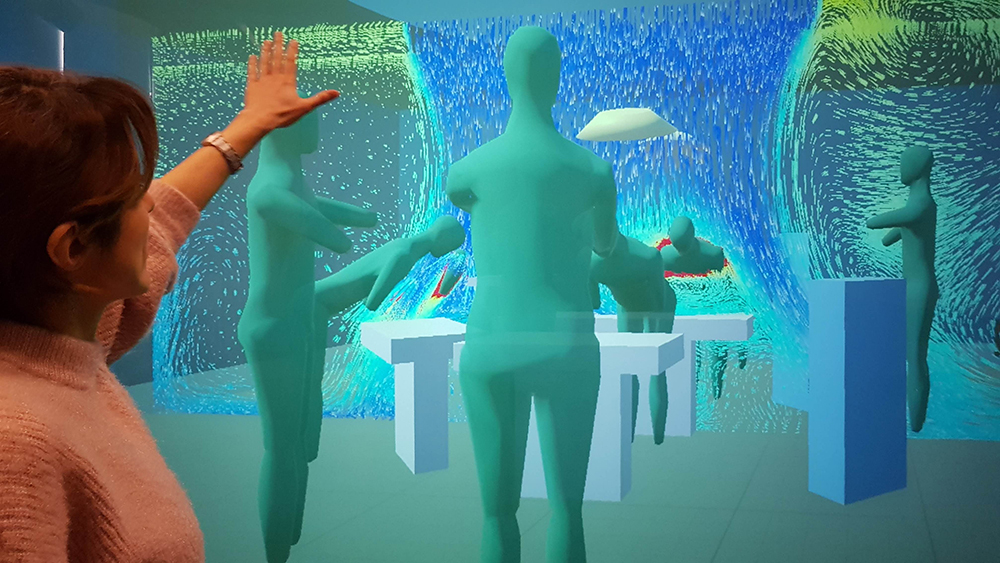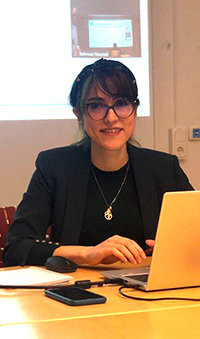Reducing the spread of airborne infection diseases by using new ventilation systems in hospitals

Just in Sweden, based on numbers from The National Board of Health and Welfare, more than 1500 patients die every year due to surgical site infections caused by bacteria-carrying particles, while the yearly death rate due to road car accidents is only about 300 persons. A very worrying issue, according to Parastoo Sadeghian, a doctoral student at the Department of Civil and Architectural Engineering. She investigates ways to improve indoor air quality and reduce the dispersion of contaminated particles in operating rooms and hospital wards.

Parastoo Sadeghian became interested in the medical field and operating rooms at an early age, but her interest in physics and mathematics led her to engineering studies. When she read about the doctoral student position at KTH, she felt that she could find an opportunity to combine her interests in surgery and the medical field with her chemical engineering background. Her research at KTH focuses on indoor air quality in hospital environments, specifically operating rooms and hospital wards.
Many factors contribute to indoor air quality
Educating people on how airborne particles can cause severe sickness is challenging since all these particles are invisible in the air. The presence of the Covid-19 pandemic has increased the attention to Parastoo's and her colleagues' research field.
– The Covid-19 pandemic showed us to what extent we are vulnerable to airborne infectious diseases. As a consequence of this pandemic, people realized that indoor air quality and ventilation systems are essential factors in reducing the risk of being sick by air contamination. There has been a considerable increase in antibiotic resistance in the last decades, which could make surgical site infections an even more severe threat to human beings. My primary purpose is to reduce airborne particle concentration in the air to minimize the infection risks in the patient after the surgery. Achieving this goal requires both improving the performance of the ventilation systems and controlling the particle sources. Several factors affect indoor air quality in the operating room, such as the movement and position of the surgical team, number of door openings, the position of the medical equipment, and the type of the ventilation system. Thus, it is also important to educate the surgical team about the impact of their behavior on reducing the airborne particles during the surgery.
Reaching zero risk of airborne infection
There are many factors that Parastoo considers when she looks at air quality in the operating rooms. First, the ventilation systems performance, including weaknesses and operating conditions, then environmental factors such as medical staff who work in the operating rooms. Showing how particles move in the air is challenging because these particles are invisible. That is why Parastoo, within the Visbac project team, has worked on visualizing the airborne particles in the operating room by using virtual reality (VR) technology in KTH VIC Lab. By wearing a VR headset, healthcare personnel can see how particles spread in the air and the importance of reducing the number of people in the operating room.
– I hope that we can reach zero risks of airborne infection. We need to work a lot to obtain a safe environment for the patient and surgical teams in the operating rooms. When we talk to people who work in hospitals, they are not educated about different ventilation systems and how they reduce contamination in the air. Therefore, we as engineers find ways to translate our fluid flow knowledge into an easy-to-understand language for the medical people to understand and thus reduce the gap betweem engineering and medical research fields.
Collaboration between engineers and medical specialists
During Parastoo's time at KTH, she has been part of the Visbac project team and also had collaborations with Avidicare Company, Danderyd Hospital, Karolinska Institute, Aalborg University in Denmark, Norconsult Company and NTNU University in Norway. These collaborations have had an important role on her progress in doing research in ventilation systems and airborne infection diseases.
– Through collaborations with hospitals and different groups, we obtained more ideas and perspectives in this field. There is a gap between the engineers who design the current ventilation systems and the users who are surgical staff in the operating rooms. We have collaborated with surgeons and specialist from Danderyd Hospital and Karolinska Institute that willingly helped us to reduce this gap. They see the importance of our research and made us aware that some surgeries such as hip and knee replacement are particularly vulnerable, as they are infection prone surgeries. Without cooperation, it would not have been possible to investigate these environments, and reduce the infection risks after the surgeries. We need to exchange information with those who are on site to be able to garantee the safety of the patient during a surgery.
Text: Hanna Kalla
This is the 14th article in the
